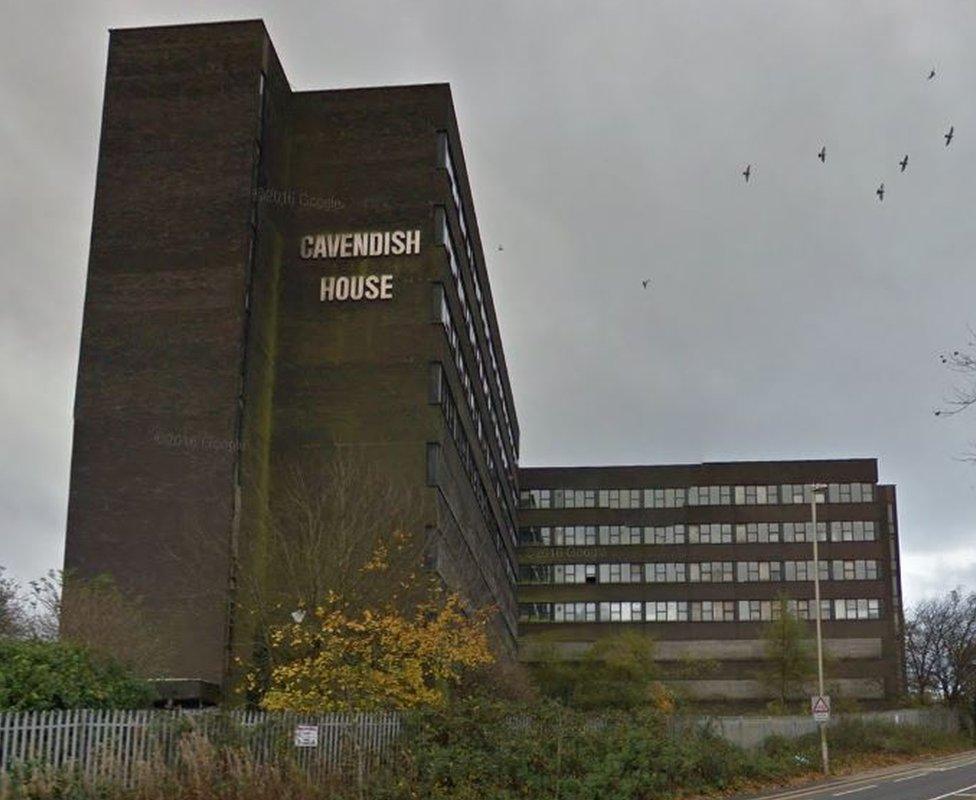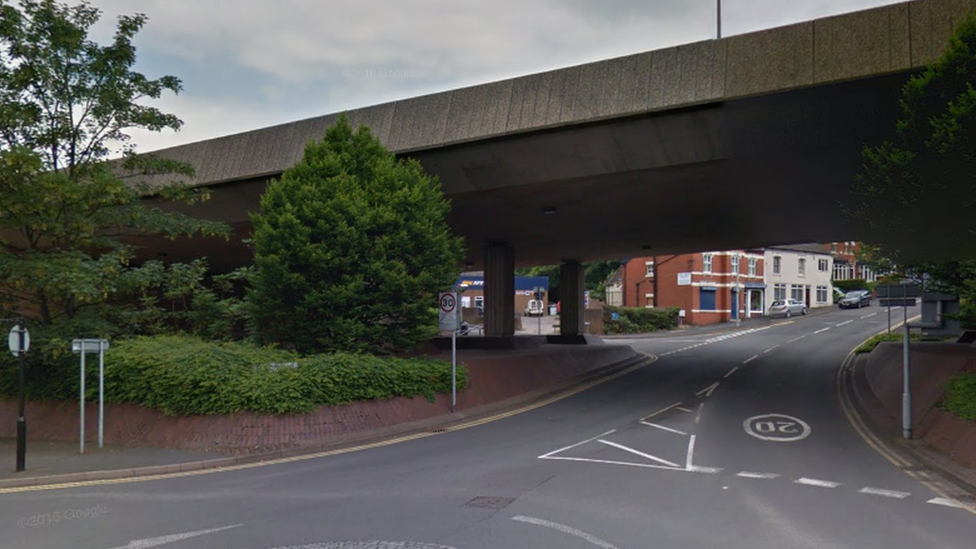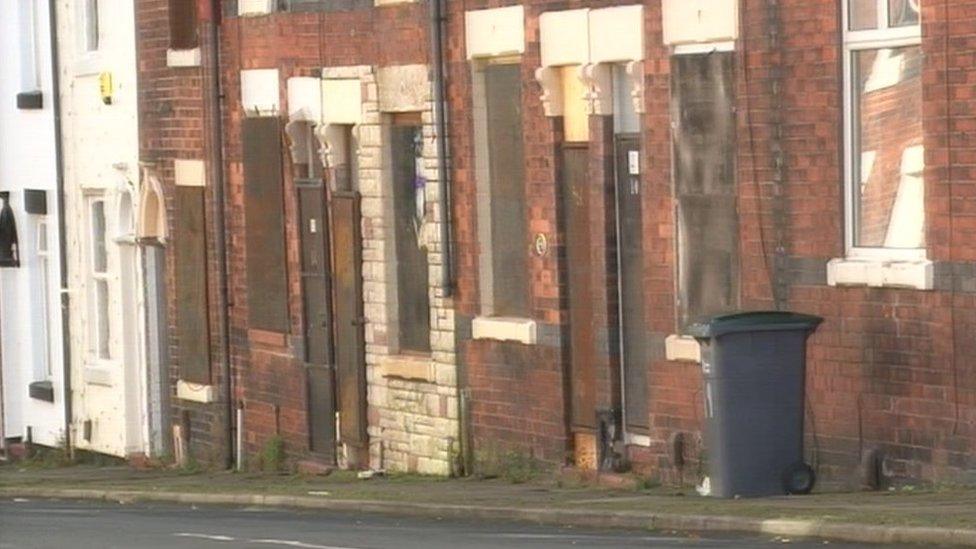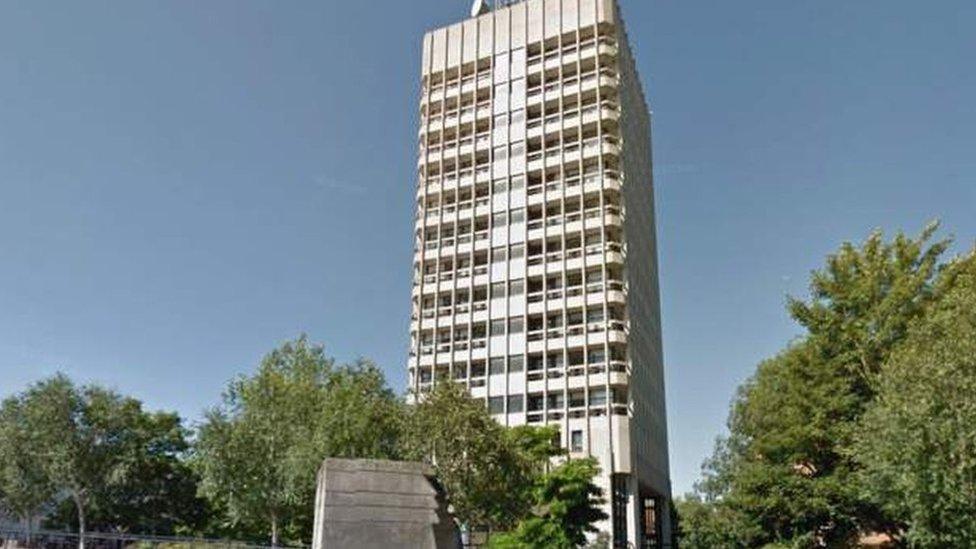West Midlands: Three things you wanted to know
- Published
Ask us your questions about where you live
Readers have been using Your Questions to tell us what they want to know about the West Midlands.
You asked for the latest news on an office block in Dudley which has stood empty for many years.
You wanted to know why a once popular picture house in Shropshire closed in 1967.
And you asked us to shed some light on the history of terraced houses in Stoke-on-Trent. Here is how we have got on with answering your questions.

Stephanie Round asked: "What's happening with Cavendish House in Dudley?"
Cavendish House in Dudley town centre was once home to Inland Revenue offices but has been empty for many years.
The seven-storey, 85,880 sq ft building was bought at auction by Avenbury Dudley Ltd for £800,000, the Express & Star reported in October 2015., external
The following month, the Birmingham Post reported, external Avenbury planned to demolish the building to pave the way for a £50m retail and leisure development.

Seven-storey Cavendish House has been empty for many years
Midlands Business News reported, external a planning application had been submitted to Dudley Council in March 2016.
We asked Councillor Khurshid Ahmed, cabinet member for planning and economic development, for the latest.
He said: "We are in regular dialogue with the developer and will be meeting with them again in the New Year."
A spokesman for Avenbury told us: "Things are still happening behind the scenes but [there is] nothing to announce yet."

"Why did the Grosvenor Picture House close in Oakengates in 1967?"
We have spoken to a number of local historians and cinema enthusiasts and the general consensus is that it closed due to dwindling audiences.
Historian Ron Miles said there were once 26 cinemas in the Telford area and two in Oakengates - but they became less popular when people started to get televisions in their own homes.

Historians told us the number of cinemas dropped when television became available to the masses
Another local historian, Rob Breeze, remembers being taken to The Grosvenor to watch Carry on Cleo.
He agreed that a lot of cinemas started closing from the late-1960s onwards, as demand fell.

The Grosvenor cinema was close to where the A442 Queensway now runs through Oakengates
There is also a theory that the cinema had to close to make way for the flyover carrying the A442 Queensway.
But according to the book "Silver Screen Memories" that is not true, because the road was not built until 1975.

"What is the history of the terraced houses in Stoke-on-Trent?"
Like many parts of the UK, terraced houses - with one design repeated along a row of joined homes - were built in the city in great numbers following the industrial revolution.
Local historian Fred Hughes said many were built around the six town centres of Burslem, Fenton, Hanley, Longton, Stoke and Tunstall. These went on to form Stoke-on-Trent.

A view across the Cobridge area of Stoke-On-Trent where derelict terraced homes were sold off by the council for £1 in 2013
They were built close to industrial centres for pottery and mining due to the lack of transport links, he said, with many knocked down towards the end of the 1950s and early 60s when they were replaced by housing estates like Chell Heath and Bentilee.
Stoke's terraced houses hit the headlines in 2013 when the city council sold off 35 of the properties, mainly in the Cobridge area, for £1.
- Published6 January 2017

- Published30 December 2016

- Published23 December 2016
